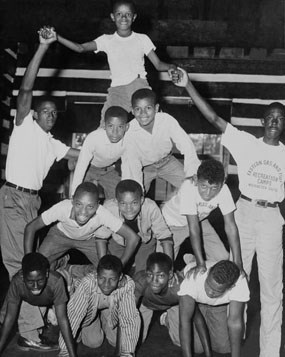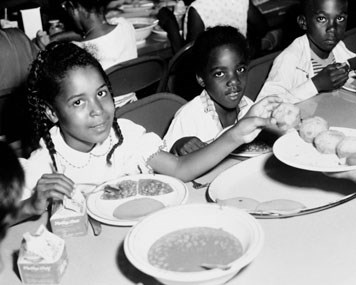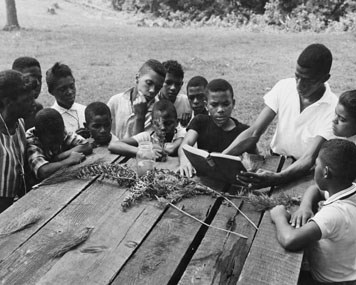
Camp Washington Carver opened its doors in 1942 as the first 4-H camp for African Americans in the United States. Originally named “The West Virginia Negro 4-H Camp,” it became known locally simply as “Clifftop.” Each year, black children from all over the state came to enjoy the fun and experience of being a camper.

The seeds for an African American 4-H camp were planted in 1928 when West Virginia University hired James E. Banks and Lulu B. Moore. As State Extension Agents, they were tasked with investigating 4-H Club activities for African Americans within the state. Their reported showed that forty-four of West Virginia counties held 4-H camps for white campers, but no camps existed for black campers. 
Dr. Davis, who had “fallen in love with the beautiful scenery and serenity of the land” in the Clifftop area, chose the current location for the camp. Construction of the first buildings occurred between 1939 and 1942. WPA and Civilian Conservation Corps workers, along with prison laborers from Moundsville were the earliest construction crews. The Great Lodge, the largest log structure on site, was built entirely of West Virginia chestnut. It housed the assembly hall, dining hall, and kitchen. Other buildings included a two-room guest house, a small cabin used as a Health Center, and dormitories for campers. A water tank and pond were also constructed.3 Use of the camp began immediately and reached its peak during the 1950s, when approximately 1,600 campers attended annually. A camper’s day began with an early breakfast followed by cabin cleaning. The main part of the day was spent in activities including nature study, music, drama, and arts and crafts. Campers had instructional time in swimming, first aid, health care, and nutrition. Of course, recreational time included swimming and sporting activities. After supper, campers had free time, followed by a play, evening vespers, and a camp fire. 
Statewide integration in the 1950s eliminated the need for a separate 4-H camp for African Americans. However, the creation of the camp in the 1940s filled a void in the lives of many West Virginia black residents. The camp provided learning and recreational opportunities and instilled pride and built self-esteem in thousands of black youth. The camp provided a safe environment for black children to participate in and enjoy amenities normally unavailable to them. In 1980, the camp was placed on the National Register of Historic Places and the name officially changed to Camp Washington Carver. Today, the camp serves as a cultural arts center for the West Virginia Department of Culture and History. |
Last updated: January 29, 2020
